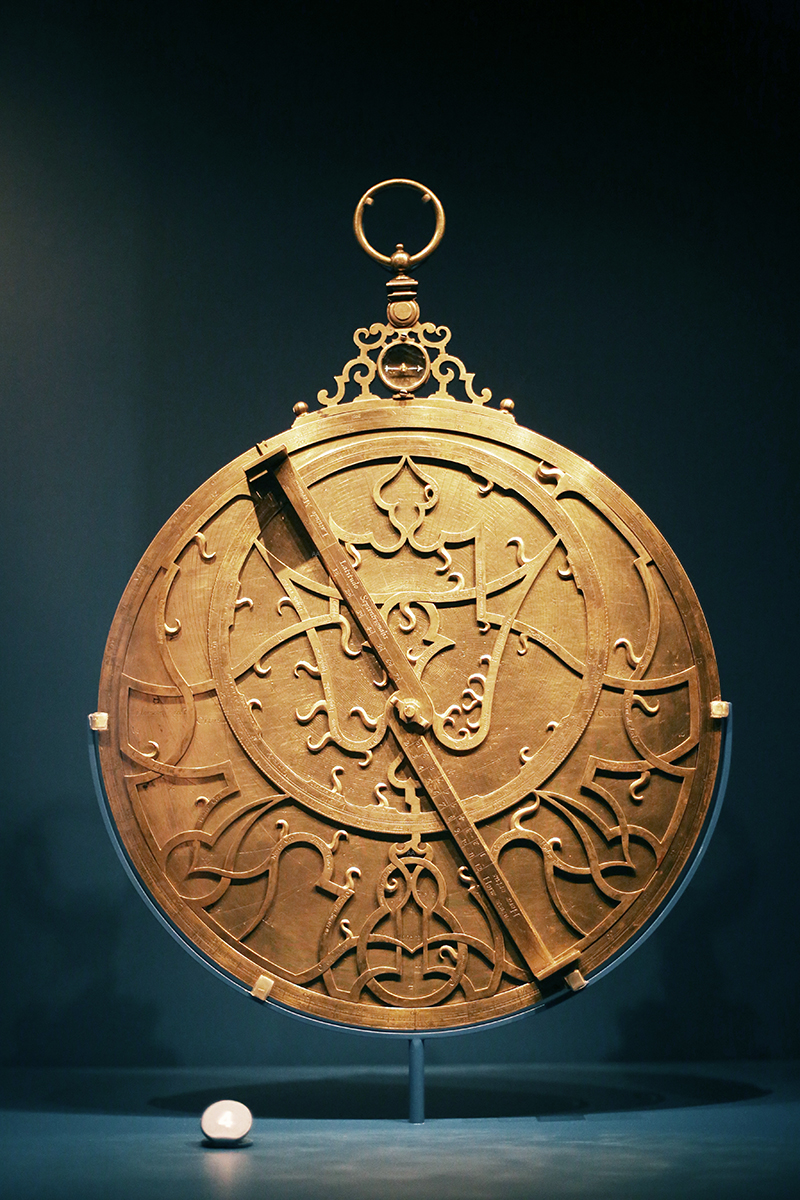
Although time and its measurement is a fundamental component of human life, a special type of clock which takes matters to the next level is the so-called
astronomical clock and whose purpose is not to measure time per se but to convey astronomical information and, in particular, the relative position of the
Sun and Moon as well as the zodiacal constellations and, in some cases, the position of the planets all as a function of time.
The oldest such effort to effectively emulate the overhead celestial sphere (ie a mini-planetarium) is the
Antikythera Mechanism which was discovered in 1901 totally by
accident by sponge divers off the coast of the Greek island of Antikythera. It has been dated to approximately 80 BC and it is believed to be the work of
Poseidonius of Rhodes. The Antikythera Mechanism is currently on display
at the National Archaeological Museum in Athens, Greece.
Note: The astrolabe is yet another instrument constructed to describe the overhead sky and monitor time. Some versions also
have religious implications such as the Muslim Qibla where a magnetic compass on the back side of the astrolabe helps the user identify the proper orientation
so as to point at the holy city of Mecca for prayer. Astrolabes were first developed by the Greeks around the second century BC and were slowly adopted
throughout the known world of the time by numerous cultures. Astrolabes describe the position of the planets and prominent stars visible at a particular
latitude (see curved markings on each dial in the photo below) and, by extension, act as time-keeping devices. Similarly, they assist in the time of expected
sunrise which is vital for the Muslim religion and the timing of morning prayers at dawn ("fajr") and thereafter at noon ("dhuhr"), afternoon ("asr"), sunset
("maghrib") and nightfall ("isha"). As a result, it is no surprise that the overwhelming number of astrolabes found in museums around the world are
islamic in origin given the adoption of these instruments from around 700 AD and thereafter by the Islamic World. Today's planispheres can be said to be a
direct extension of the ancient astrolabe, for they function and inform the user of precisely the same information sought-after by users many centuries ago.
The brass astrolabe below is credited to the scientific instrument maker Ferdinand Arsenius from Antwerp, Belgium and was constructed during 1607-1618. It
weighs an impressive 4.08 kg and measures 480 mm by 340 mm by 45 mm and is prominently displayed at The Clockmaker's Museum in central London. It is
planespheric in nature, for it projects the three-dimensional celestial sphere onto a two-dimensional plane comprised of disks with the latter correcting for
differences due to latitude. Also, angular data is available on the periphery of each disk and which, regrettably, is not readily visible in the photograph
below due to sampling. The three accompanying plates represent five separate latitudes. During the Middle Ages, three-dimensional astrolabes were first
described but only one such example seems to have survived to present day and which can be found at the History of Science Museum in Oxford, England.
The Clockmakers' Museum is located on the second floor of The Science Museum of London and admission is free. An online reservation for a free ticket is not only
highly adviseable but ensures immediate entrance and without any need to stand in queue. The hours of operation of both museums is 10:00 to 18:00 and a visitor
will easily be kept highly engaged for a few hours. The metro station "South Kensington" has an underground tunnel approximately 750 meters in length and which
leads to the proper entrance above ground and about 20 meters to one's right as they exit the tunnel.
Note: For additional results involving astronomical clocks and astrolabes from around the world, please click
here.
|
Body: Sun Mass: 332,900 x Earth Mass Eq Diameter: 109.1 x Earth Distance: 149 million km RA / Dec: 23h 41m 41s / +89° 19' 51" Diameter: 32.16' Magnitude: -26.8 |
 |
Date: Nov 30, 2023 Location: The Science Museum, London, England Equipment: Canon EOS 6D Baader BCF2 Filter Canon EOS EF 50mm/f1.8 USM @ f2.0 Exposure: 1 x 1/500 sec ISO 6400 JPG Fine Image Format 5472x3648 Image Size Custom White Balance Continuous Servo Mode Manual Mode Software: Photoshop CS6 Processing: White Balance Adjustment Resampling JPG Compression |